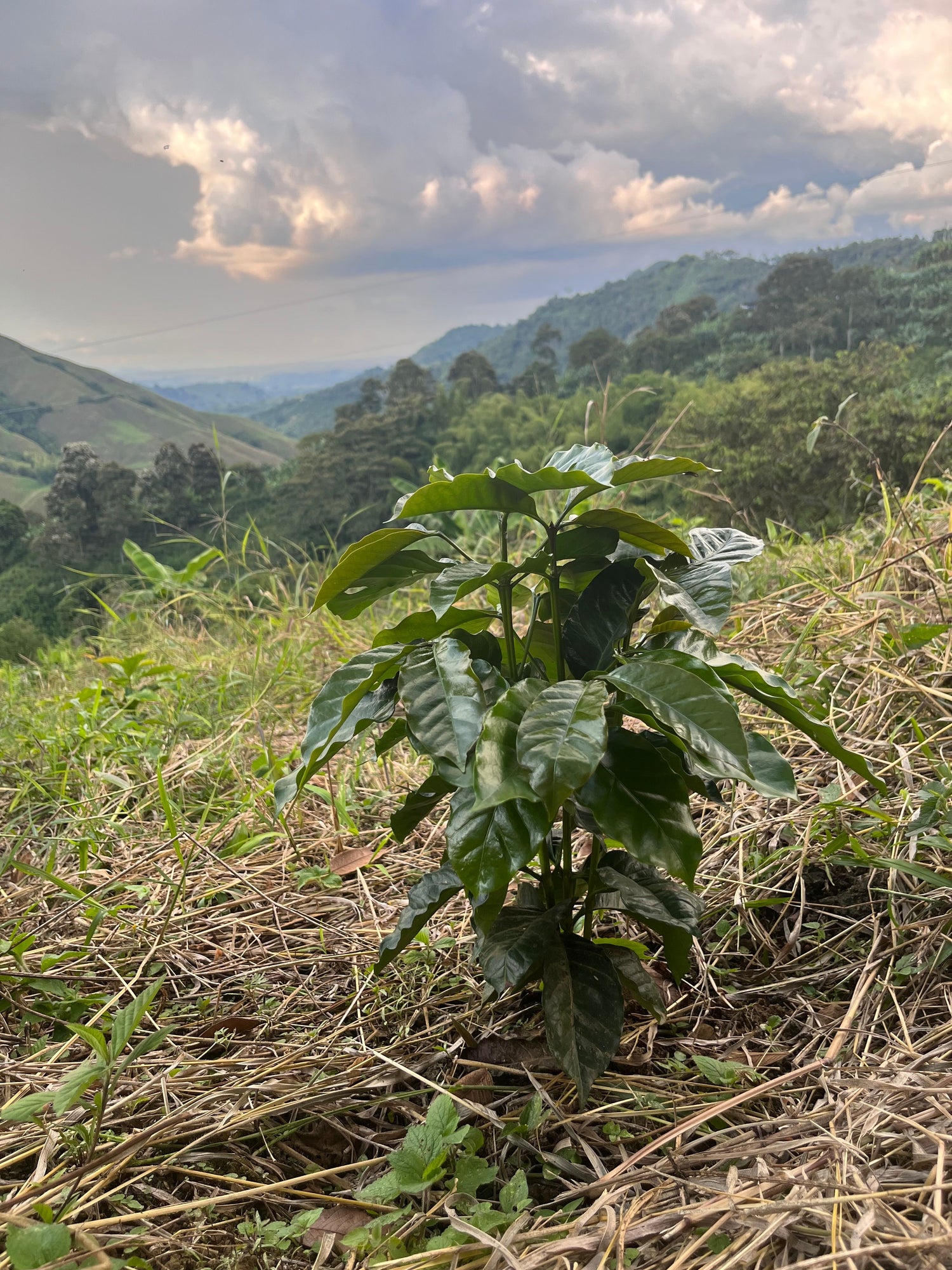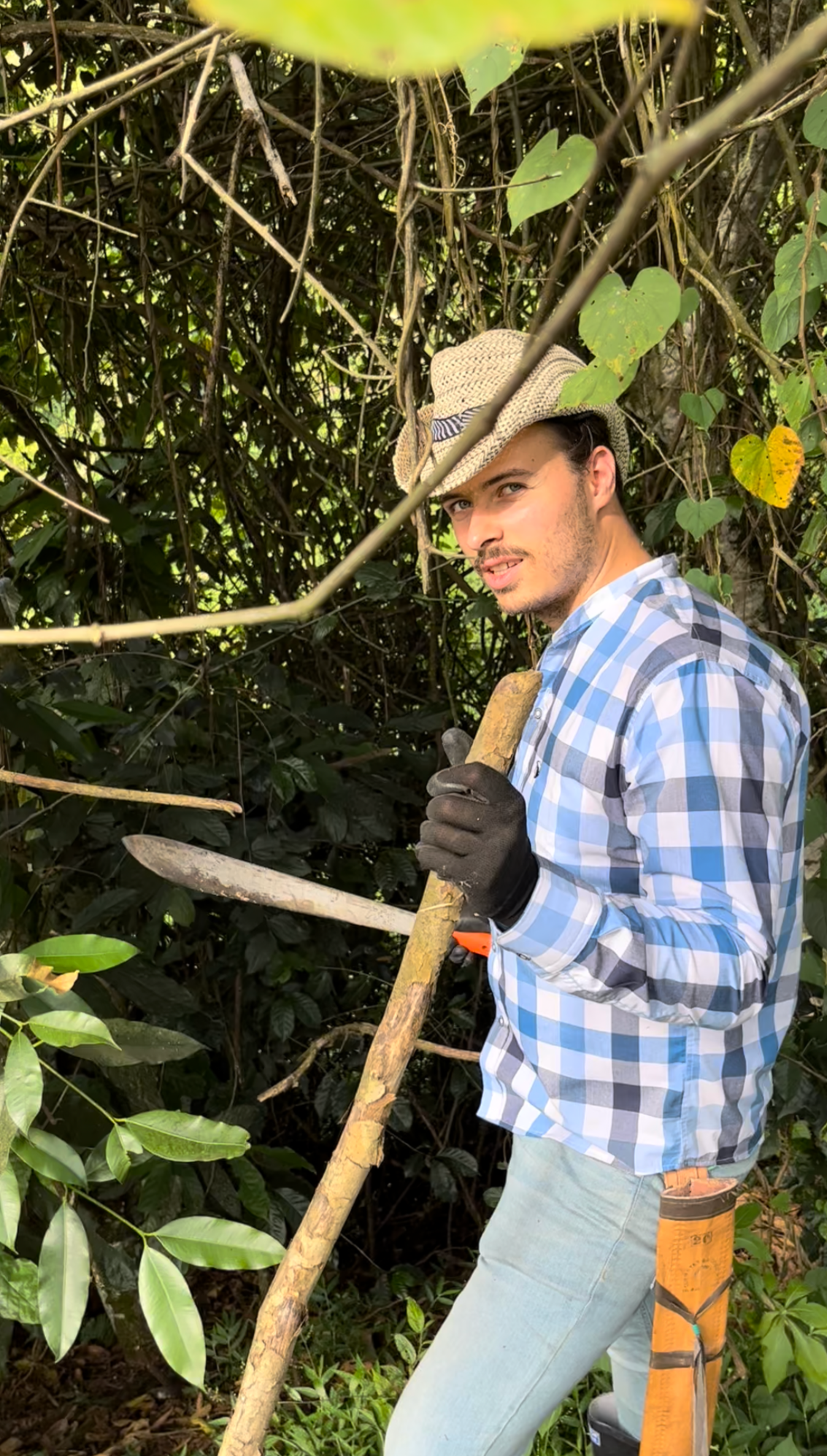Colombian coffee is often referred to as highland coffee, as the growing areas in Colombia are in the foothills of the Andes. Colombia is one of the world's top coffee exporters and one of the most traditional coffee growing countries. But what is it that fascinates people so much about Colombian coffee?
Here we will explain the secrets and peculiarities behind Colombia's coffee success story.
Today we will take a closer look at the following topics:
- What is Colombian coffee known for?
- How did coffee come to Colombia?
- This is what coffee from Colombia tastes like
- Arabica coffee varieties grown in Colombia
- What quality is Colombian coffee?
- Coffee cultivation in Colombia: ideal conditions?
- The Coffee Zone of Colombia: Where Tradition, Culture and Coffee Come Together
- Worrying developments in Colombia's coffee zone
What is Colombian coffee known for?
Due to the excellent growing conditions, only Arabica coffee is grown in Colombia. In general, the question "Which coffee comes from Colombia?" is easy to answer: Arabica coffee. However, not all Arabica coffee is the same, so we will look at the different varieties below. Colombian coffee is known for its high quality and its incomparable taste, which is both mild and full-bodied. A precisely defined aroma profile for Colombian coffee cannot be determined because the coffee it produces is as diverse as the country itself. Depending on the growing region, the coffee from Colombia tastes very different. And this diversity is what makes Colombian coffee so exciting and successful.
How did coffee come to Colombia?
Even though Colombia is very famous for coffee and is one of the countries with the longest tradition of producing coffee, the coffee does not actually come from there. It originally comes from Ethiopia, more precisely the “Kaffa” region.
According to legend, coffee was brought to Colombia by the Jesuits around the year 1700. The coffee plant owes its widespread popularity to a clergyman, an early "coffee nerd". He had the people of his community plant coffee trees as a remission of sins. 4-5 trees and you could be at peace with yourself again.
This increased the spread in the beginning. Once a certain basis had been created, people were able to see the economic benefits and more and more coffee trees were planted "voluntarily".
This is what the coffee from Colombia tastes like:

It is difficult to classify the taste of Colombian coffee precisely because of the enormous variety. Basically, the coffee has a good balance of sweetness and acidity and a variety of aromas and notes. A typical Colombian coffee tastes primarily fruity, with a strong sweetness and a slightly chocolatey finish. The aroma is complex due to the high proportion of acids. This makes the coffee very lively. You could say that the coffee almost has a tropical note and is reminiscent of tropical fruit. This is exactly how you imagine a coffee from tropical Colombia.
However, there are also coffees with a rich body and heavier, chocolaty notes. The variety of flavors is very large.
There are actually differences in taste, for example depending on the variety (type of coffee) but also on the region where it is grown. We have described in more detail in this article which differences in taste are caused by the region where it is grown.
Arabica coffee varieties grown in Colombia:

The most typical varieties of Arabica coffee cultivated in Colombia are: Typica, Colombia, Caturra, and Castillo. Castillo is a further development of the Colombia variety and is more resistant to pests, which makes organic cultivation easier.
The latest development of Colombian coffee plants is "CeniCafé Uno". Cenicafé is an institution that researches and develops coffee. For example, the coffee is adapted to changing climatic conditions, made more resistant to pests, etc. The latest development was first named after this institution. CeniCafé Uno (1).
Then there are rare varieties such as Bourboun (yellow and pink), Geisha, Wush-Wush. These varieties are a little richer in aroma than the classic Colombian coffees. However, they are also more difficult to cultivate and less productive.
What quality is Colombian coffee?
There are three quality levels for Colombian green coffee. The quality is largely determined by the size of the beans. In short, this is because a larger bean can bind more nutrients and therefore has a more intense flavor.
- Supremo: The highest quality for beans that pass through sieve sizes 17-20 (beans with a diameter of 6.8mm to 8mm)
- Excelso: The second highest quality for beans that pass through sieve sizes 15 + 16 (beans with a diameter of 6.0mm to 6.8mm) Excelso beans are milder in taste compared to Supremo with more emphasis on the acids
- UGQ (usual-good-quality): average quality for beans that pass through sieve size 14 (beans with a diameter of 5.6mm to 6.0mm)
Anything below this is called "caracol" and refers to beans of inferior quality. Caracol means snail. No one has yet been able to explain the meaning behind this to us.
Growing coffee in Colombia: ideal conditions?

First of all, it should be noted that coffee is grown in Colombia at altitudes of 1,200 - 2,000 m above sea level. Therefore, the growing areas coincide with the location of the three mountain ranges of the Andes that run through Colombia from north to south.
The western mountain range "cordillera occidental", the central mountain range "cordillera central" and the eastern mountain range "cordillera oriental". Due to the altitude and the location on the equator, there is a mild and tropical climate all year round with enough changes between sun and rain and an ideal, consistent temperature.
In addition, the mountain ranges are covered with rich, volcanic soil. Overall, the Andean belt in Colombia forms a perfect breeding ground for Colombian coffee. This, in turn, is of high quality and rich in aromas thanks to the good conditions. This is why Colombia and coffee are a strong team.
We have examined the details of coffee cultivation in Colombia in more detail in this article .
Have you ever had the pleasure of enjoying Colombian Arabica coffee? No? Too bad, we have to change that! Take a look around here .







1 comment
Wow, super interessant. Schade was dort passiert. Ich freue mich euch auf eurem Weg zu unterstützen, wir müssen endlich aufhören die fernen Länder auszubeuten.